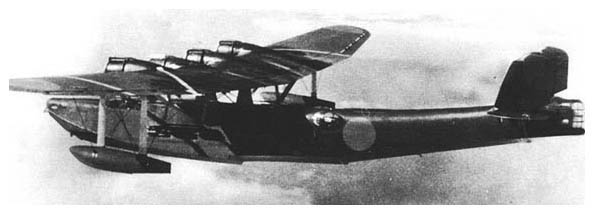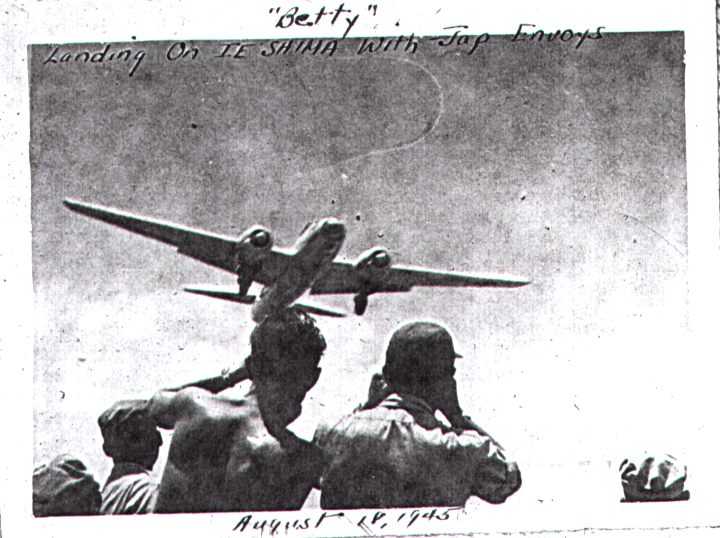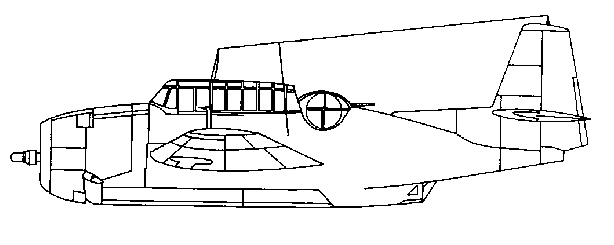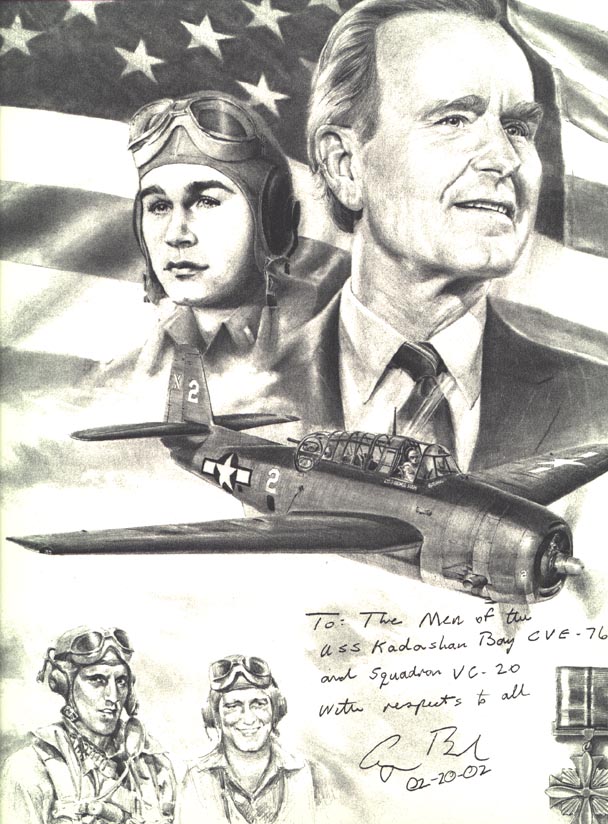|
Posted on 10/22/2003 12:00:41 AM PDT by SAMWolf
|
|
 are acknowledged, affirmed and commemorated.
|

| Our Mission: The FReeper Foxhole is dedicated to Veterans of our Nation's military forces and to others who are affected in their relationships with Veterans.
Where the Freeper Foxhole introduces a different veteran each Wednesday. The "ordinary" Soldier, Sailor, Airman or Marine who participated in the events in our Country's history. We hope to present events as seen through their eyes. To give you a glimpse into the life of those who sacrificed for all of us - Our Veterans.
|
|
First U.S. Navy Ace, Medal of Honor Recipient Savior of USS Lexington, First Hellcat Night-Fighter Edward H. O'Hare was born on March 13, 1914 in St. Louis, the son of "E.J." O'Hare, a wealthy businessman and attorney. His parents sent him to Western Military Academy (WMA) at age 13, where he pursued an interest in marksmanship, becoming president of the rifle club. In 1932, he graduated from WMA, and in 1933 went on to the US Naval Academy. Many of his classmates from both schools died in WWII. Upon his graduation from Annapolis he received choice duty on the USS New Mexico (BB-40). While he was interested in aviation, all new officers had to spend two years in surface ships, before specializing in aviation or submarines. Thus in 1939 he started flight training at Naval Air Station (NAS) Pensacola, learning the basics on N3N-1 and Stearman NS-1 biplane trainers.  Lt. Cdr. Edward "Butch" O'Hare In November, his father was gunned down by Al Capone's gunmen, most likely because he had given the government information useful in its prosecution of Capone. The gangland-style murder made big headlines, and the newspapers printed numerous speculations on the circumstances of the murder. Many of these were less than flattering and implied that E.J. was involved with the mob. (Ewing & Lundstrom's excellent biography, Fateful Rendezvous: The Life of Butch O'Hare, covers these events in great detail.) Returning to Pensacola after the funeral, young O'Hare moved up to flying more advanced biplanes like the Vought O3U, the Corsair SU, and the Vought SBU-1 scout bomber (top speed 205 mph). In early 1940, he completed the required flying in patrol planes and advanced land planes. When he finished his naval aviation training in May, he was assigned to VF-3, the USS Saratoga's Fighting Squadron. The CO was Warren Harvey; the great John "Jimmy" Thach was XO at this time, later succeeding Harvey as CO. VF-3 was flying the Grumman F3F-1 biplane and the newer Brewster F2A-1. In July, 1940, Ed O'Hare made his first carrier landing, "just about the most exciting thing a pilot can do in peacetime." Jimmy Thach used to knock the new pilots down a notch by outflying them. He would let a rookie gain an altitude advantage, and then, while reading a newspaper or eating an apple, he would out-maneuver him and get on his tail. But when he tried this on O'Hare, he couldn't gain an advantage. Duly impressed with O'Hare's impressive flying abilities, Thach closely mentored the promising young pilot.  In early 1941, VF-3 transferred to Enterprise, while Saratoga underwent a major refit at Bremerton. While the 'Big E' was at San Diego, Warner Brothers filmed the early Technicolor movie Dive Bomber on it, featuring Errol Flynn, Ralph Bellamy, and Fred MacMurray. July was an important time for Ed O'Hare. He met his future wife, Rita (proposing to her the first time he met her) and also made his first flight in a Wildcat. He and Rita married six weeks later, and for a honeymoon, they sailed to Hawaii in separate ships, Butch on Enterprise and Rita in a passenger liner. On February 20, 1942, Butch O'Hare demonstrated in real life, and when it counted most, the fighting skills he had mastered. The carrier Lexington had been assigned the dangerous task of penetrating enemy-held waters north of New Ireland. From there her planes were to make a strike at Japanese shipping in the harbor at Rabaul. Unfortunately, while still 400 miles from Rabaul, the Lexington was discovered by a giant four-engine Kawanishi flying boat. Lieutenant Commander John Thach, skipper of the Lexington's Wildcat fighters, shot down the Japanese "Snooper," but not before it had radioed the carrier's position. That afternoon Commander Thach led six Wildcats into the air to intercept nine twin-engine enemy bombers. In a determined attack each of the Wildcats destroyed a bomber and damaged two more. The ship's anti-aircraft guns finished off the rest. In the meantime, nine more Japanese bombers were reported on the way. Six Wildcats, one of them piloted by Butch O'Hare, roared off the Lexington's deck to stop them. O'Hare and his wingman spotted the V formation of bombers first and dived to try to head them off. The other F4F pilots were too far away to reach most of the enemy planes before they released their bombs. As if this weren't bad enough, O'Hare's wingman discovered his guns were jammed. He was forced to turn away. Butch O'Hare stood alone between the Lexington and the bombers.  Lieutenant Edward H. ("Butch") O'Hare, USN, (left) and Lieutenant Commander John S. Thach, USN. Shaking hands in front of a Grumman F4F "Wildcat" fighter plane at an Oahu air base, circa April-May 1942. Both men were assigned to Fighting Squadron Three (VF-3), of which Thach was Commanding Officer. O'Hare didn't hesitate. Full throttle, he roared into the enemy formation. While tracers from the concentrated fire of the nine bombers streaked around him, he took careful aim at the starboard engine of the last plane in the V and squeezed his trigger. Slugs from the Wildcats six .50-caliber guns ripped into the Japanese bomber's wing and the engine literally jumped out of its mountings. The bomber spun crazily toward the sea as O'Hare's guns tore up another enemy plane. Then he ducked to the other side of the formation and smashed the port engine of the last Japanese plane there. One by one he attacked the oncoming bombers until five had been downed. Commander Thach later reported that at one point he saw three of the bombers falling in flames at the same time. By now Thach and the other pilots had joined the fight. This was lucky because O'Hare was out of ammunition. The Wildcats took care of several more bombers and Lexington managed to evade the few bombs that were released. It was an amazing example of daring and shooting skill. Afterward Thach figured out that Butch O'Hare had used only sixty rounds of ammunition for each plane he destroyed. He had probably saved his ship. He was promoted to Lieutenant Commander and awarded the highest decoration of his country, the Congressional Medal of Honor.  With his Medal of Honor presentation, bond tours, and other commitments, Butch was out of combat from early 1942 until late 1943. On October 10, 1943, he flew with VF-6 in the air strikes against Wake Island. On this mission Alex Vraciu, the future ace, was Butch's section leader. Both O'Hare and Vraciu scored that day. In November, 1943, the Americans landed in the Gilberts (Tarawa and Makin), and the carriers were covering the landings. Equipped with the new F6F Hellcats, the US fighter pilots owned the skies, and could protect the Navy's warships from Japanese aircraft. From their bases in the Marianas, the Japanese quickly developed tactics to send torpedo-armed Bettys on night missions against the US carriers. In late November they launched these low-altitude strikes almost nightly, in a deadly attempt to get at Enterprise and other American ships. Ed O'Hare, now Enterprise Commander - Air Group (CAG), was deeply involved in developing ad hoc counter-tactics, the first carrier-based night fighter operations of the US Navy. As the primitive radars were very bulky, they were carried on the Enterprise, on the fairly large TBF Avengers, but not on the smaller and faster Hellcats. The plan required the ship's Fighter Director Officer (FDO) to spot the incoming Bettys at a distance and send the Avengers and Hellcats toward them. The radar-equipped Avengers would then lead the Hellcats into position behind the incoming Bettys, close enough for the Hellcat pilots to spot visually the Bettys blue exhaust flames. Finally, the Hellcats would close in and shoot down the torpedo-carrying bombers. All the planes on both sides would be flying at low level. The plan was experimental, complicated, risky, and necessary - if the Bettys were to be thwarted.  F6F Hellcats The night of November 27, 1943 was the first combat test of the plan, following an earlier mission that hadn't contacted the Japs. The 'Black Panthers', as the night fighters were dubbed, included two sections of three planes. Both included two Hellcats and one Avenger. Butch led his section from his F6F, Warren Skon flew on his wing; Lt. Cdr. Phillips piloted the TBF with radarman Hazen Rand and gunner Alvin Kernan crewing the plane. (Alvin Kernan's memoirs of his experiences as an enlisted man on US Navy carrier during WWII, Crossing the Line: A Bluejacket's World War II Odyssey, describe this night in detail, from the perspective of the man who fired the Avenger's gun seconds before Butch disappeared. (The book also happens to be the best-written narrative of WWII naval aviation that I've read in a long time. I recommend it highly. But it's now out-of-print.) The night's events were complicated and confusing: the Hellcats had trouble finding the Avenger, the FDO had difficulty putting any of them on the targets, and it was all new to everyone. Phillips, in his lightly armed Avenger, found some of the attacking Japanese bombers and surprisingly, shot two of them down. Following that brief action, in the dark, with nothing to be seen but the flaming gasoline from the downed Bettys burning on the water (for over an hour?), the O'Hare and Skon got into position behind the Avenger. About that time, the Avenger identified a Betty behind the Hellcats. Kernan fired at it. Moments later, O'Hare failed to respond to the radio; he had gone down.  TBF Avenger What happened? There are three possible explanations:
For their roles in protecting the carrier and in carrying out the Navy's first combat night-fighting mission, Phillips, Rand, and Kernan were awarded Navy Crosses. (Cynics ever since have concluded that the Navy, having to choose between courts-martial or medals for the Avenger crew, opted for the latter, not wanting to admit that its biggest hero had been brought down by friendly fire.) Having read Lundstrom's book, Fateful Rendezvous: The Life of Edward O'Hare, and Kernan's memoirs, Crossing the Line: A Bluejacket's World War II Odyssey, I'm inclined to accept Lundstrom's most likely explanation, and also his general conclusion. Both books are very well-written , and I recommend them to readers interested in this topic, not merely for the events of November 27, 1943.
|
Hi everybody.

Glad you liked it.
Go Yankees!!!
I agree with the author on "Crossing the Line"-it's an outstanding read and I highly recommend it. And for anyone who's interested, it's not out of print. You can get it at the U.S. Naval Institute Press
http://www.usni.org/webstore/shopexd.asp?id=19066
Thanks for letting us know the book "Crossing The Line" is available again.
In February 1946, following shakedown O'Hare became an active unit of the Navy ready to guard the freedom won during World War II. After spending 1946 in operations ranging from New Brunswick down to the Florida Keys, she embarked her first group of midshipmen for a cruise to Europe during the summer of 1947. Departing Norfolk early in May 1948 she sailed to the Mediterranean temporarily serving under the United Nations' flag as an evacuation ship off Haifa, Palestine, 24 June through July during the first postwar Arab-Israeli conflict. Several goodwill visits took place before departure for home in September at the conclusion of this first deployment with the Sixth Fleet.
Eight additional such tours of duty, prior to the end of 1962, permitted ship's company to gain a great deal of familiarity with the area. Midshipman cruises and NATO maneuvers added new vistas and dimensions to her training exercises as did several rescue operations. Twice in 1952 this destroyer received commendations for her efforts after ships had collided at sea, while in 1957 and again in 1961 aviators from the carriers Randolph and Franklin D. Roosevelt respectively were plucked from the sea. Meanwhile, to update and increase her value to the Navy, O'Hare was converted during 1953 to a radar picket ship (DDR-889) and in 1958 received installation of the electronic data system. The next major modification, in 1963, a FRAM Mk I overhaul, restored her original designation.
The increasing tempo and scope of conflict in Vietnam brought DD-889 an assignment to WestPac duty. Steaming from Norfolk, 1 June 1966, she assumed station as a gun support ship along the coast of Vietnam on 15 July. After firing missions in all four Corps areas in the South and operations off the communist North, O'Hare returned home 17 December via the Suez Canal completing a circumnavigation of the world. She remained along the East Coast until January 1969 when with Squadron 32 she again deployed to the Mediterranean.
Decommissioned October 31 1973, loaned to Spain renamed Méndez Núñez (D63). Stricken June 2 1975. Sold to Spain May 17 1978.
Fate: Stricken and scraped in 1992.
USS O'Hare 1946 before her Fram I mods 
USS O'Hare 1964-1968 after Fram II conversion







TBF

F6F Hellcat

TBF Avenger

Kenneth Bratton USN, lifted from a TBF "Avenger" turret on USS Saratoga (CV-3) after a raid on Rabul. November 1943. (Lt Wayne Miller)

TBF-1D: Same as TBF-1C except for special radio and radar installation.
TBF-1E: Same as TBF-1C but equipped with special radar.

The Navy equipped some Avengers with the APS-20 radar for use in defense of the fleet against Kamikaze planes


A lawyer for Chicago capo Capone fathered the savior of Lexington who disappeared as mysteriously as Earhart to reappear at the nation's busiest airport in Chicago.
Chicago: the circle is unbroken.
I watched a movie the other day.."The Bridge at Remagen".
WOW...the movie was suprising in the detail that was given.
Uniforms...U.S. M3 Hallftracks..Scout cars.
German 88's....2 Sdkfz 250's'..those german version of the U.S. M3
and lots of M-24 Chaffee's ! : )

It is March 1945, a mere two months before the end of WWII in Europe, and the focus of both the Allied and German high commands has shifted to the small town of Remagen. In this picturesque village stands the last undamaged bridge over the Rhine. Both sides want the bridge destroyed -- the Germans to preserve their last line of natural defense and the Allies to trap an entire German army on their side of the river. Contrary to orders, German Major Krueger (Robert Vaughn) decides to keep the bridge open long enough for the retreating forces to escape to safety. Unfortunately for him, an advance group of the American 9th Armored Division, lead by Lt. Hartman (George Segal), enters the town much sooner than anticipated and, finding the bridge still standing, tries to capture it intact.
The opening scene to the movie really sets the pace, depicting American armored units tearing down roads and railroad tracks at top speed with guns blazing. What this movie does that most others don’t is to show just how fast and furious mechanized warfare can be. The battle for the bridge is just as accurate and intense. The performances are good throughout and help to put a human face on those who will meet in battle.
’The Bridge at Remagen’ is presented in a non-anamorphic, 2.35:1 widescreen format. The print has a few nicks here and there but on the whole is relatively clean. Colors are somewhat muted, mostly due to the drab palette used for this type of film. Brightness and contrast are good with only a few interior scenes coming across as too dark. All in all the picture is quite good.
The audio is presented in it’s original mono, split between the two front speakers. What’s amazing about this mix is just how good the deep bass comes across. The rumble of tanks and abundant explosions all pack more punch than might be expected from a thirty year old film. This is one of the more dynamic mono mixes I’ve heard.
Extras include the theatrical trailer and standard MGM collectible booklet. If you usually ignore these inserts, you may want to take the time to read this one. ’The Bridge at Remagen’ was filmed in Czechoslovakia in 1968, just before the Prague Spring uprisings, and the booklet discusses how the cast and crew were forced to flee across the border in advance of the invading Soviet Army. Not your run of the mill production problems there!
’The Bridge at Remagen’ is a classic war movie that is too often overlooked for its more star-studded brethren such as ’A Bridge Too Far’ and ’The Longest Day.’ Focusing on a single, defining event in the war, the movie offers up fully developed characters and exciting, realistic action. Highly recommended.
Loved the scene where the Chaffee's were racing along the river trying to get the first bridge before it was blown up.
The Bridge at Remagen’ was filmed in Czechoslovakia in 1968, just before the Prague Spring uprisings, and the booklet discusses how the cast and crew were forced to flee across the border in advance of the invading Soviet Army. Not your run of the mill production problems there!
Interesting trivia.
I liked the George Segal and Ben Gazzara roles. Showed two men tired of the war and just trying to finish the job and get home.

Disclaimer: Opinions posted on Free Republic are those of the individual posters and do not necessarily represent the opinion of Free Republic or its management. All materials posted herein are protected by copyright law and the exemption for fair use of copyrighted works.